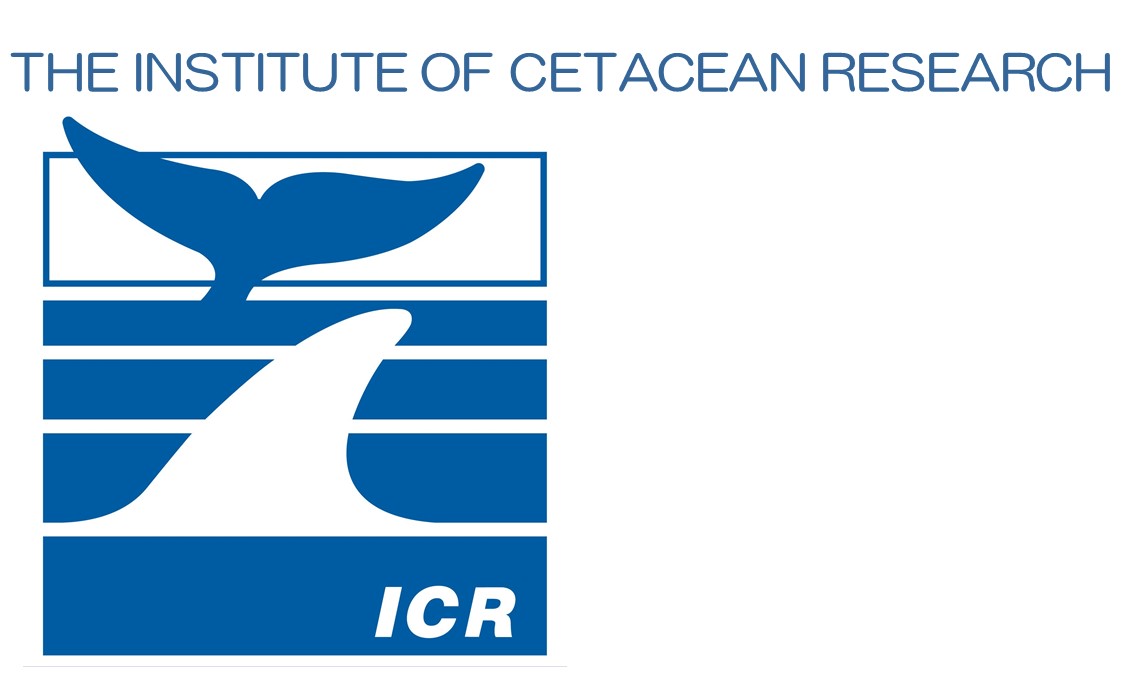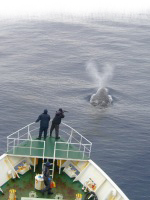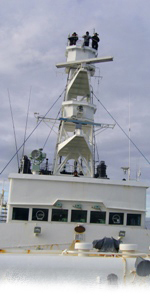Completion of Japanese Abundance and Stock-structure Surveys in the Antarctic (JASS-A) 2022/2023 Research Cruise
March 13, 2023
Designated Corporation for Scientific Whale Research
THE INSTITUTE OF CETACEAN RESEARCH
1. Background
This research program is a continuation of the Japanese government's research program (non-lethal research) aimed at the sustainable use of whale resources in the Antarctic Ocean, and this survey is the fourth research cruise in the Antarctic after Japan's withdrawal from the International Whaling Commission (IWC) on June 30, 2019. This year's research in the Antarctic included a sighting survey, biopsy sampling, satellite tagging, oceanographic observation and collection of other relevant information on cetaceans.
The scientific information obtained from this research will be provided to relevant international organizations such as the IWC Scientific Committee, the Ecosystem Monitoring and Management Working Group of the Commission for the Conservation of Antarctic Marine Living Resources (CCAMLR) and the Scientific Committee of the North Atlantic Marine Mammal Commission (NAMMCO) in order to contribute to the appropriate management of whale resources in the Antarctic Ocean.
The research vessels Yushin-Maru No. 2 and Yushin-Maru No. 3 departed from Shiogama, Miyagi Prefecture respectively on December 5 and 7, 2022, and returned to port (Yushin-Maru No. 2 to Shiogama and Yushin-Maru No. 3 to Shimonoseki, Yamaguchi Prefecture) on March 13, 2023 after conducting research for 28 days (from January 10 to February 6, 2023) in the south of 60 degrees south latitude.
2. Survey plan and summary of results
This survey is financially supported by the Fisheries Agency, and the Institute of Cetacean Research takes the lead in planning, implementing and conducting analyses of data obtained from it. This year's survey was conducted by two research vessels in the eastern part of Area VI, one of the IWC management areas of the Antarctic Ocean (south of 60 degrees south latitude and between 130 and 145 degrees west longitude).
This year's survey was conducted by two research vessels in the eastern part of Area VI, one of the IWC management areas of the Antarctic Ocean (south of 60 degree south latitude and between 130 and 145 degree west longitude).
During the survey, we collected sighting data consistent with previous surveys, which are necessary to estimate whale abundance. In addition, we collected numerous biopsy samples and also successfully collected various other non-lethal survey data by attaching satellite tags to cetaceans and other methods. This year's research cruise was conducted by two vessels, which enabled us to efficiently cover the survey area. Compared to the previous year cruise (with only one research vessel), this year's results showed a 2.8-fold increase in the number of individual identification photo shooting, a 2.1-fold increase in the number of biopsy samples collected, and a 1.7-fold increase in the number of satellite tags attached, overall making the survey more productive.
The survey confirmed the presence of several species, including blue, Antarctic minke, fin and humpback whales. The largest number of Antarctic minke whales was found in the southernmost part of the research area, near the Antarctic Continent, where they were distributed at high densities. No baleen whales other than the Antarctic minke whale were found in that area.
Antarctic minke whales are known to migrate south to the ice edge in the Antarctic Ocean, which is their feeding ground, to form high-density aggregations. However, recent global warming has caused the partial melting of the fast ice, which has allowed this species to penetrate further into the ice edge, where research vessels cannot enter, making it difficult to grasp their entire distribution. In this year's survey, the melting of the fast ice was greater than expected, and we succeeded in surveying the areas near the Antarctic Continent, which had been difficult to survey due to the ice presence. There, Antarctic minke whales were distributed in high densities, confirming that this species is still in a healthy stock status. Since the information on the areas formed behind the ice edge is extremely important for the research of this species, the Institute has developed and begun operating a VTOL-UAV (Vertical Take Off and Landing, Autonomous Unmanned Aerial Vehicle) to conduct surveys of whale resources from above such areas.
Thus far, it has become clear that fin and humpback whales have been distributed in large numbers in the Antarctic Ocean since 1990 due to the recovery of their stocks. This situation was also confirmed in this year's research, suggesting that whale species migrating to the Antarctic Ocean are maintaining healthy stock status.
The eastern section of Area VI south of 60 degrees south latitude between 120 and 145 degrees west longitude was covered by last year's survey (120 to 130 degrees west longitude) and this year's survey (130 to145 degrees west longitude).
2.1 Main Research Objectives
The main research objectives of JASS-A are:
(1) Study of abundance and their trends of large whale species in the Antarctic Ocean.
(2) Study of the distribution, movement and stock structure of large whale species in the Antarctic Ocean.
2.2 Research Cruise and Survey Period
Yushin-Maru No. 2 research cruise: 99 days.
From December 5, 2022 (Shiogama departure) to March 13, 2023 (arrival in Shiogama).
Yushin-Maru No. 3 research cruise: 97 days.
From December 7, 2022 (Shiogama departure) to March 13, 2023 (arrival in Shimonoseki).
Number of survey days (within the research area):
From January 10 to February 6, 2023 (28 days).
2.3 Research Area
This year's survey area was the eastern part of Area VI, one of the IWC management areas in the Antarctic Ocean, south of 60 degrees south latitude and between 130 and 145 degrees west longitude (Figure 1). In addition, mid- and low-latitudinal sighting surveys were conducted during the cruise to and from the research area.
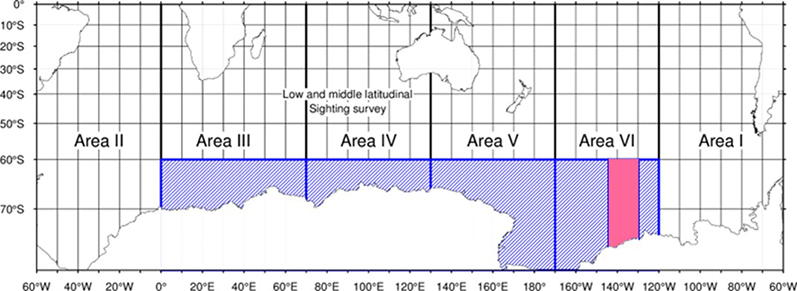
Figure 1. JASS-A Research Area. The 2022/2023 survey area is shown in pink. The blue box indicates all research areas.
2.4 Researchers
Yushin-Maru No. 2:
Four researchers led by Tatsuya Isoda (Cruise Leader, Institute of Cetacean Research).
Yushin-Maru No. 3:
Four researchers led by Taiki Katsumata (Chief Scientist, Institute of Cetacean Research).
2.5 Research Vessel
Yushin-Maru No. 2, (747 tons, Captain Hidenori Kasai, 16 crews in total).
Yushin-Maru No. 3, (742 tons, Captain Nobuo Abe, 16 crews in total).
Both ships are owned by Kyodo Senpaku, Ltd.
Forty members led by Cruise Leader Isoda and Captains Kasai and Abe were onboard engaged in the research.
2.6 Implementing Body
Designated Corporation for Scientific Whale Research - The Institute of Cetacean Research.
2.7 Total Search Distance (including mid- and low-latitude sighting survey)
6,027.0 nautical miles (about 11,162.0 km).
2.8 Main whale sightings (including mid- and low-latitude sighting survey)
Blue whale: 21 schools; 32 animals
Fin whale: 96 schools; 212 animals
Antarctic minke whale: 317 schools; 634 animals
Humpback whale: 27 schools; 56 animals
Sei whale: 10 schools; 13 animals
Bryde's whale: 4 schools; 4 animals
Pigmy right whale: 2 schools; 2 animals
Sperm whale: 21 schools; 30 animals
Southern bottlenose whale: 1 school; 2 animals
Killer whale: 12 schools; 130 animals
2.9 Results from various Experiments and Observations
(1) Distance angle estimation experiment
A preliminary distance-angle estimation experiment was conducted to determine the accuracy of the estimation of the angle and distance of detection by each visual observer.
(2) Individual identification photo shooting (number of individuals)
Blue whale (26 animals), humpback whale (11 animals), killer whale (37 animals).
(3) Biopsy sample collection (number of individuals)
Blue whale (8 animals), fin whale (20 animals), sei whale (6 animals), Antarctic minke whale (28 animals), humpback whale (16 animals), pigmy right whale (2 animals), killer whale (9 animals).
(4) Satellite tag attachment experiment
Satellite tags were attached to 8 fin whales, 25 Antarctic minke whales, 2 humpback whales, 2 sei whales and 1 pigmy right whale to record their migration and diving behavior.
Short-term diving behavior recorded by satellite tags showed that fin and humpback whales were mainly in the vicinity of 10 to 20 m depths, while Antarctic minke whales rarely dived deeper than 5 m (Figure 2).
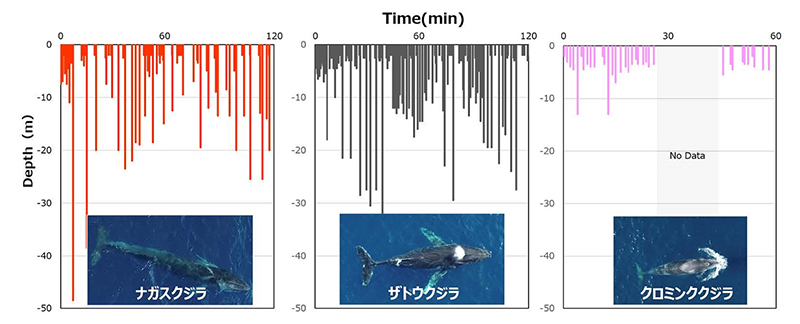
Figure 2. Diving behavior of (from left to right) fin, humpback, and Antarctic minke whales observed by 2022/2023 JASS-A satellite tags.
(5) Oceanographic observation by XCTD (Expendable Conductivity-Temperature-Depth probe)
Water temperature and salinity were measured at 137 stations from 0 to 1,850 m depth for the purpose of comparing oceanographic structure and cetacean distribution in the research area.
(6) Photography experiments utilizing drones
This year, we deployed ASUKA, a VTOL-UAV (Vertical Take Off and Landing, Autonomous Unmanned Aerial Vehicle), which we have been developing for some time, to collect basic information necessary to further improve our whale resource research through autonomous flights in the Antarctic Ocean. Also, small drones were used for filming experiments aimed at measuring whale body length, body mass index, and observing swimming behavior, and photographed blue and Antarctic minke whales.
(7) Observation of marine debris
This year, nine marine drifting objects (eight rubber and plastic buoys, and one plastic receptacle) were observed in the research Area.
3. 2022/2023 JASS-A Research Cruise photographs
 |
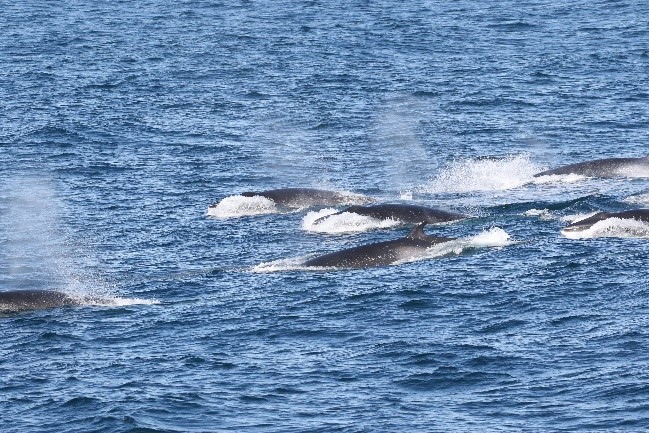 |
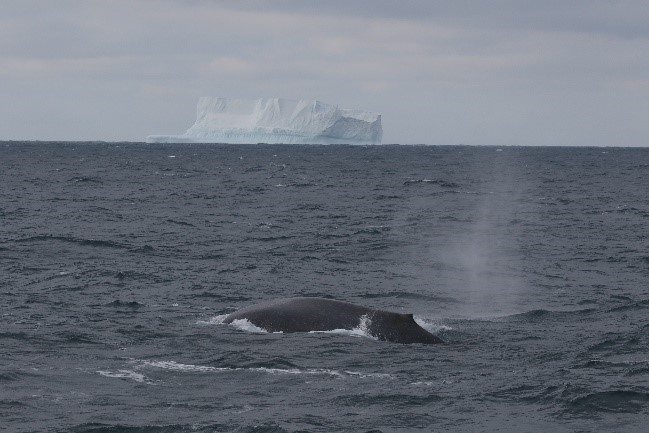 |
| Blue whale mother and calf | A large group of Antarctic minke whales observed near Antarctica | A blue whale |
 |
 |
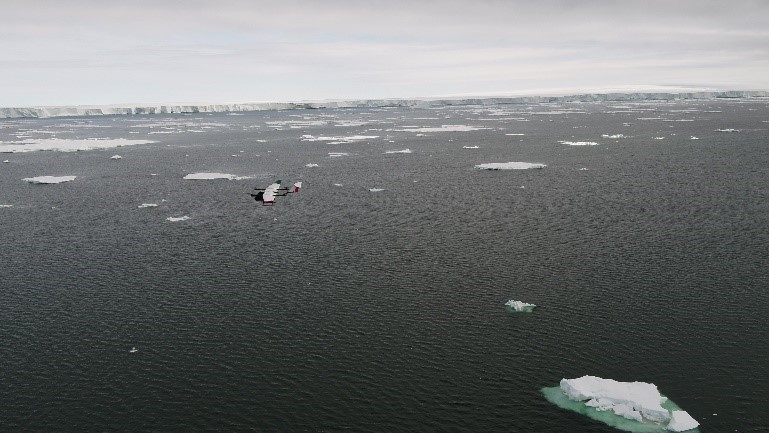 |
| Humpback whale caudal fin | VTOL-UAV ASUKA takes off from the vessel | VTOL-UAV ASUKA flying near an ice floe |
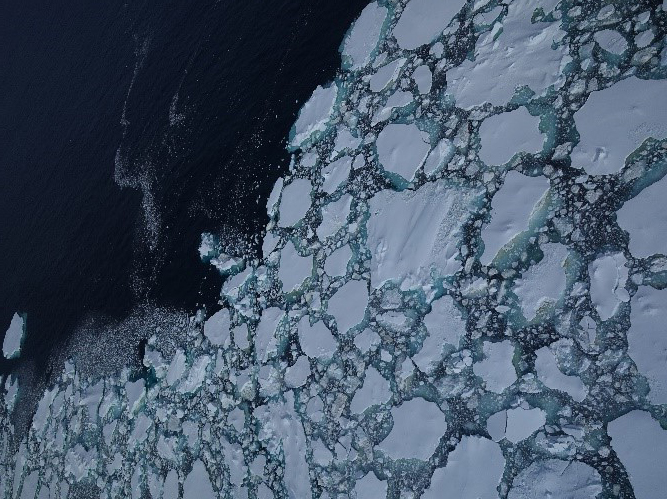 |
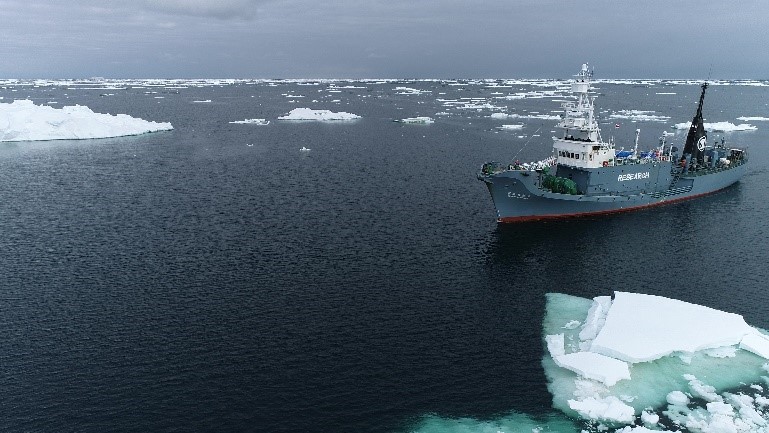 |
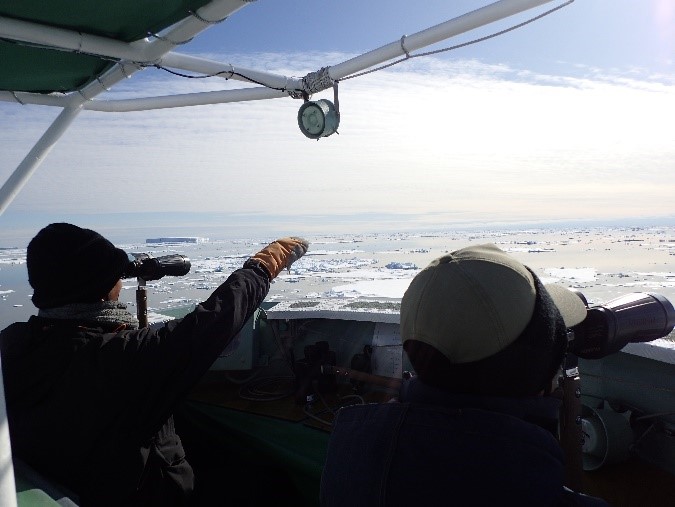 |
| Sea ice photographed by the ASUKA VTOL-UAV | Research vessel Yushin-Maru No. 2 navigates through the sea ice | Exploring in the sea ice |
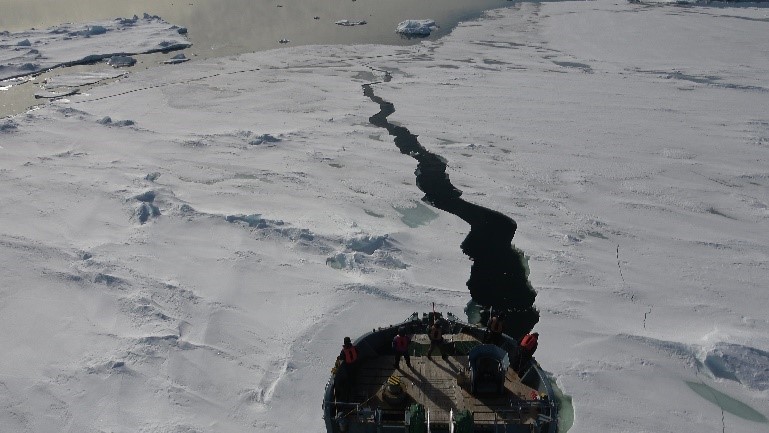 |
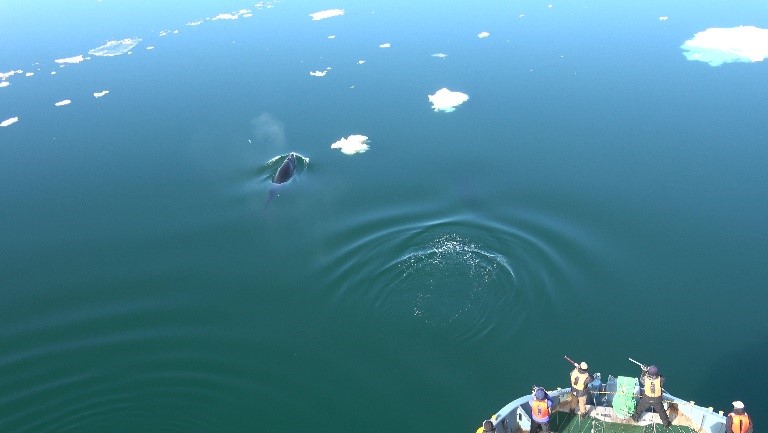 |
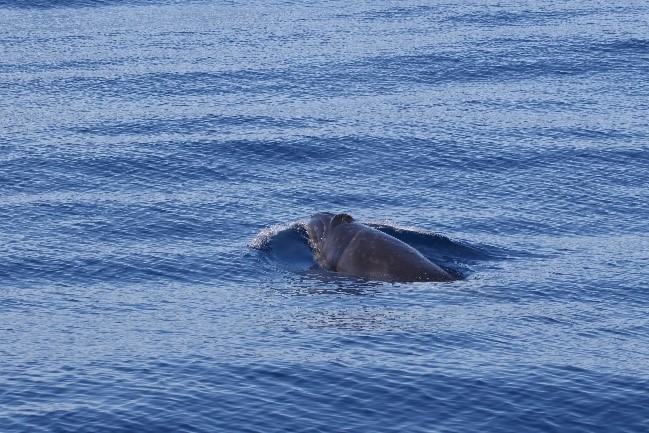 |
| Research vessel Yushin-Maru No. 2 navigates through the sea ice | Antarctic minke whale satellite tagging | Pigmy right whale sighted during the mid- and low-latitude survey |
JASS-A Survey video available on the Institute's YouTube channel (https://www.youtube.com/channel/UCz3c9IIMiQPVeryAogmJIig)
Completion of Japanese Abundance and Stock-structure Surveys in the Antarctic (JASS-A) 2022/2023 Research Cruise (PDF file)
